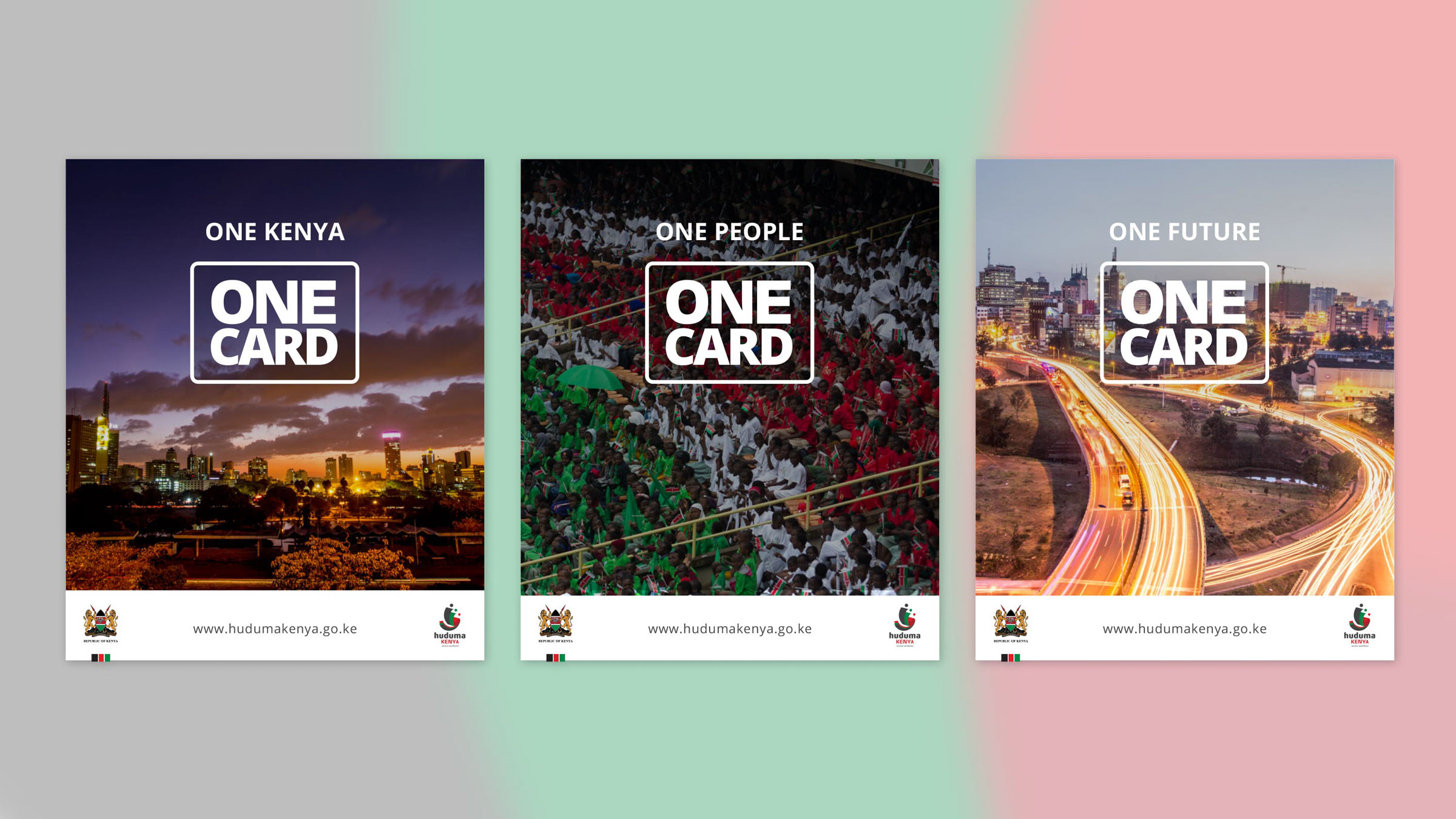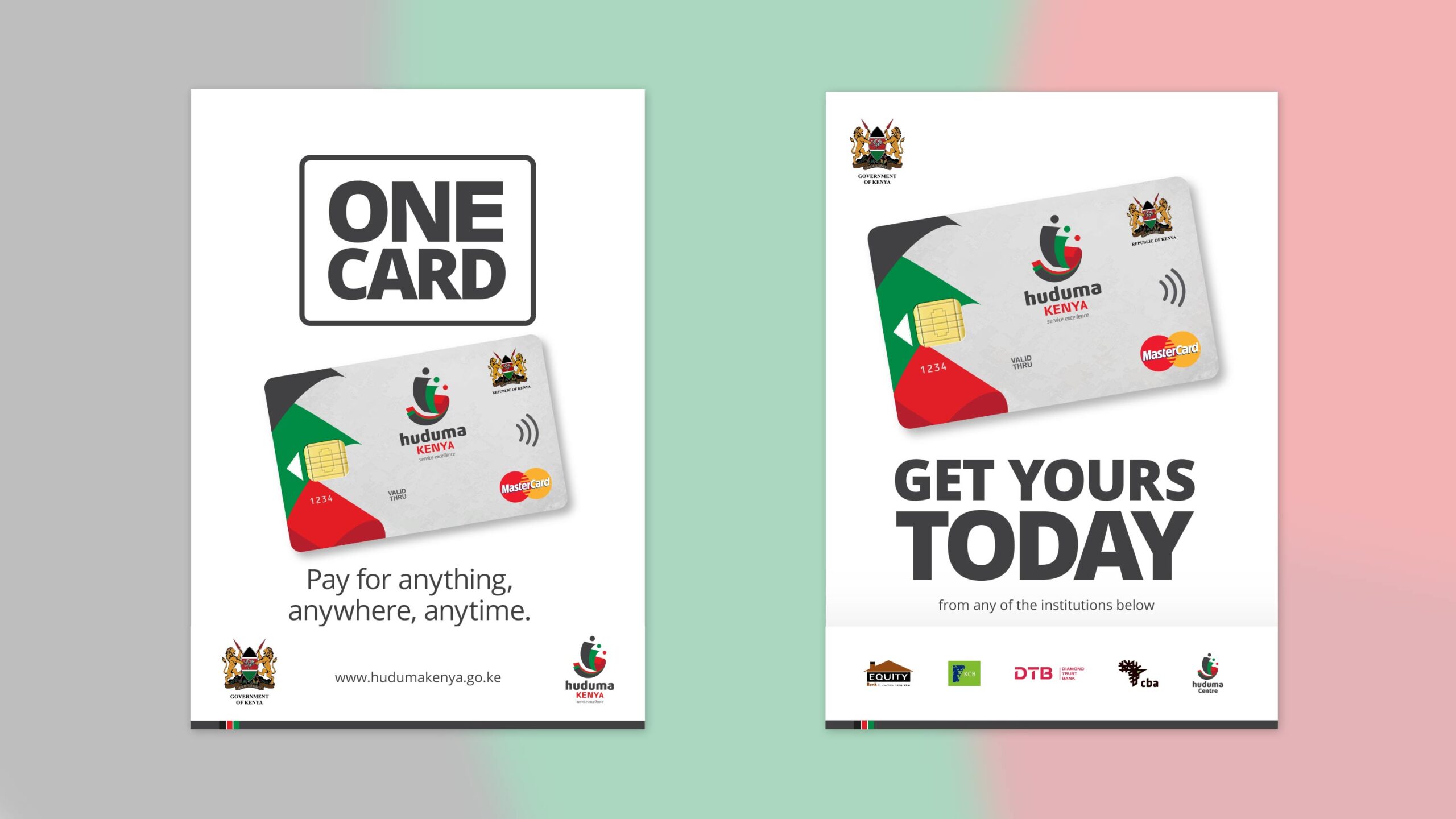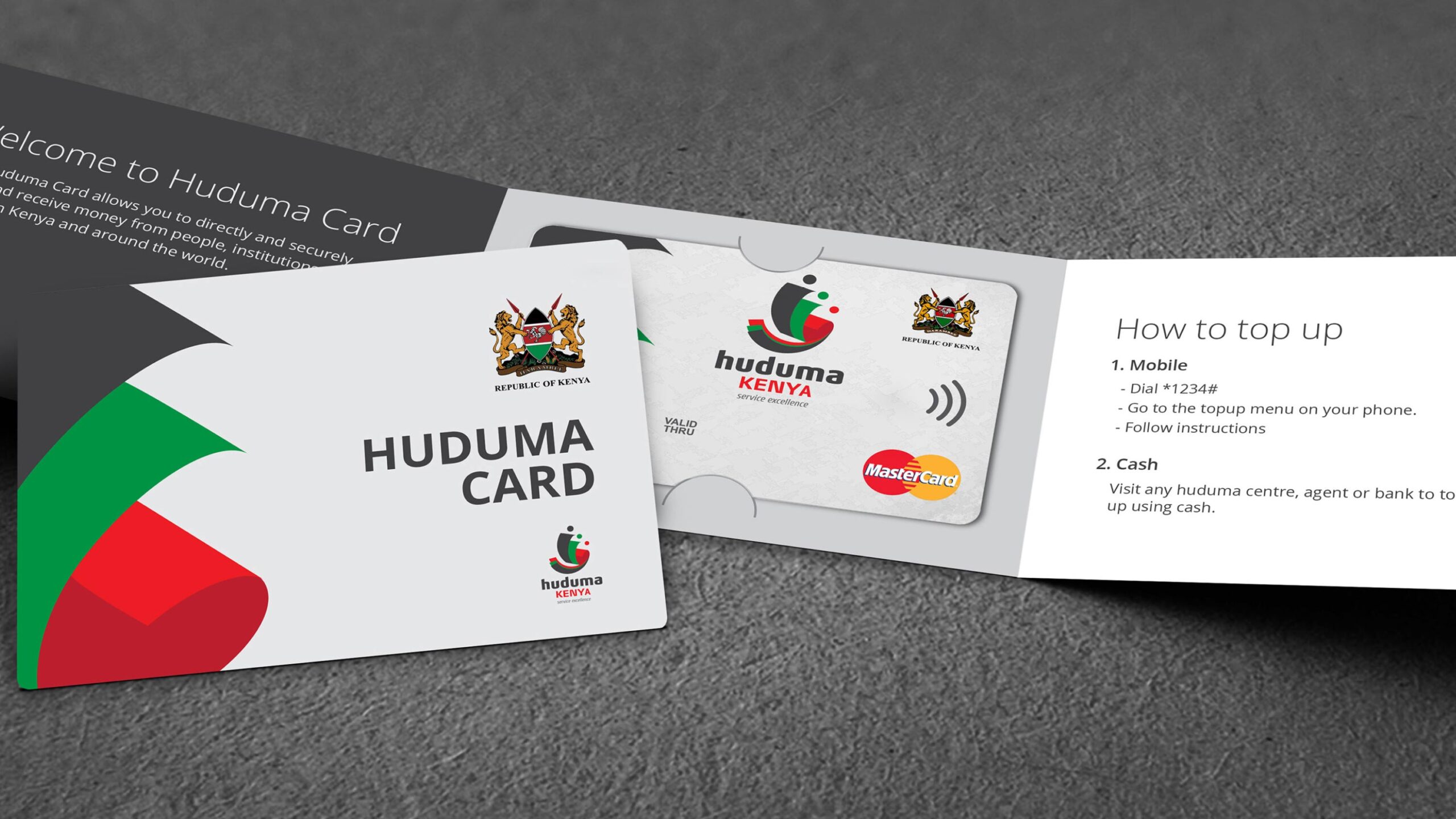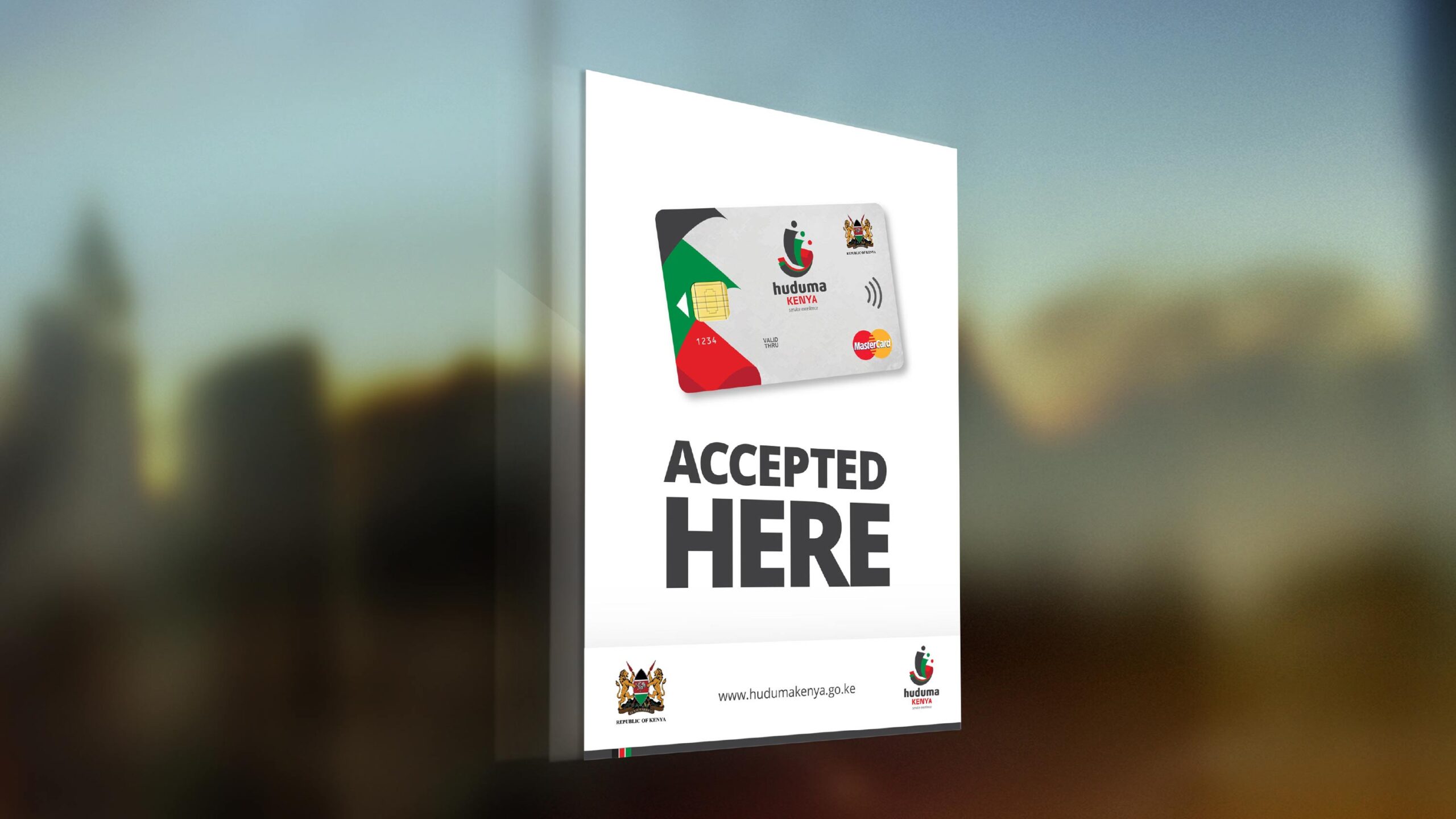CASE STUDY – Government of Kenya
Transforming government service delivery.
Complete digital & service transformation of government agencies transitioning from analogue/physical administrative processes to digital systems, as well as humanising the interaction between government and citizens.
The Government of Kenya has embarked on an extensive exercise to bring its services closer to its citizens, in the form of the Huduma online platform. Accessing government services through digital channels is an ambitious, yet timely project.
Service Transformation Approach
We embarked on a holistic exercise to understand the workings of current “analog” government service delivery systems, and mapped these to key citizen needs and scenarios. Defining this context would be key to set the foundation of ensuring that individual user needs were addressed when transforming traditional and bureaucratic processes to more streamlined digital flows.
Design Principles for Digital Services
We chose to rely on our tried and tested Design Thinking approach to create a framework that encompasses 3 design principles:
Design Principle 1: Human-Centered Design
Creative problem solving based on human needs, through an iterative process of continuous testing & improvement.
Design Principle 2: Inclusive Design
Embracing the widest spectrum of users, as Government caters for all without exception.
Design Principle 3: Habituation
Assumption-free design, with empathy for user context and their frame of reference.
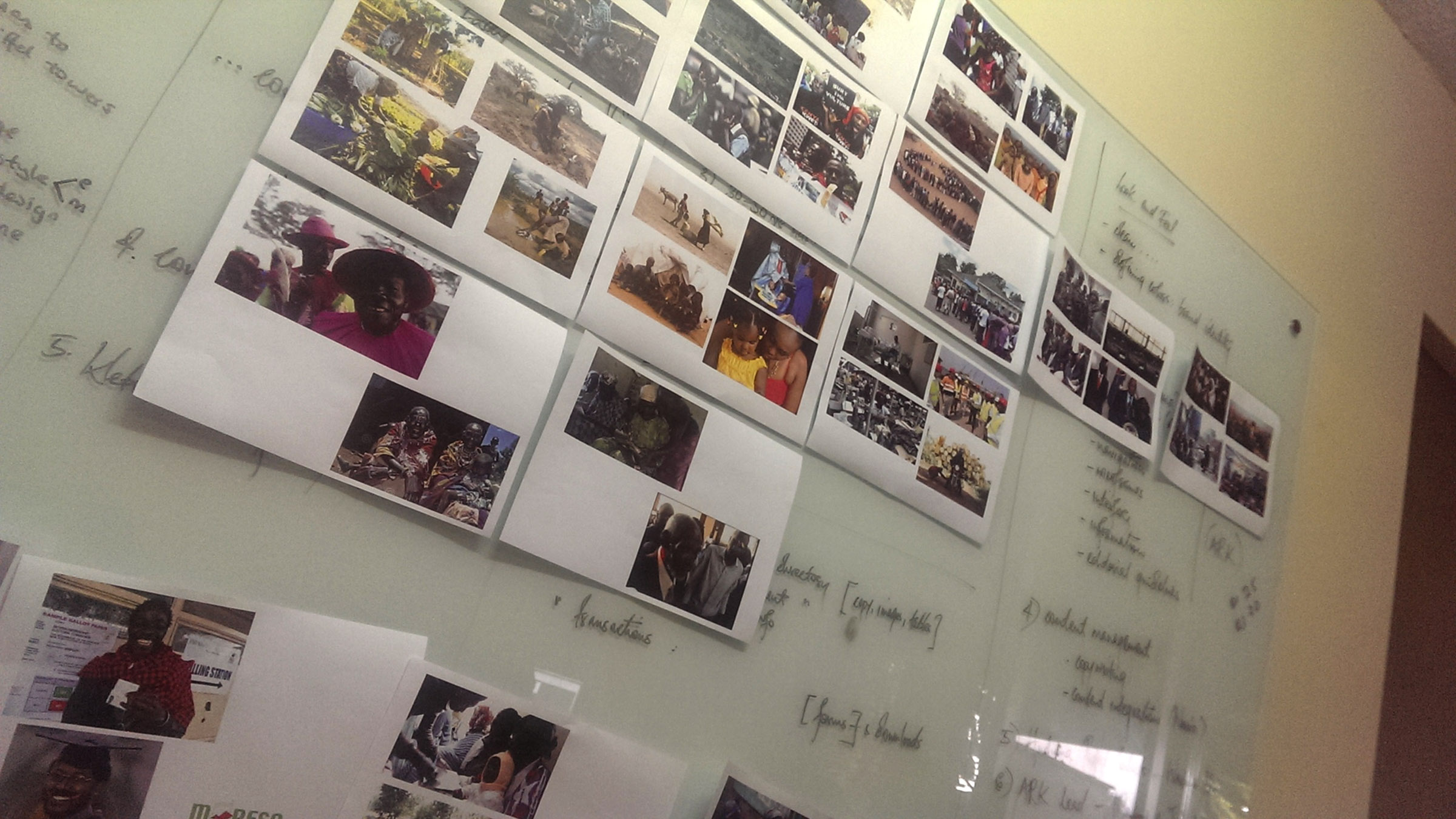
The design objectives formulated from these were distilled into the need for a scalable, functional and simple platform interface.
Service Design
Analog Processes to Digital Services
We weren’t building a website, we were building digital services where the following transformations were taking place:
- Government agencies: analog/physical administrative processes to digital systems
- Users: humanizing the interaction between government and citizens though a screen.

Process Flows
Citizens simply want service – we provide this simply through clear information and efficient transactions.

Flow design, IA and Wireframes
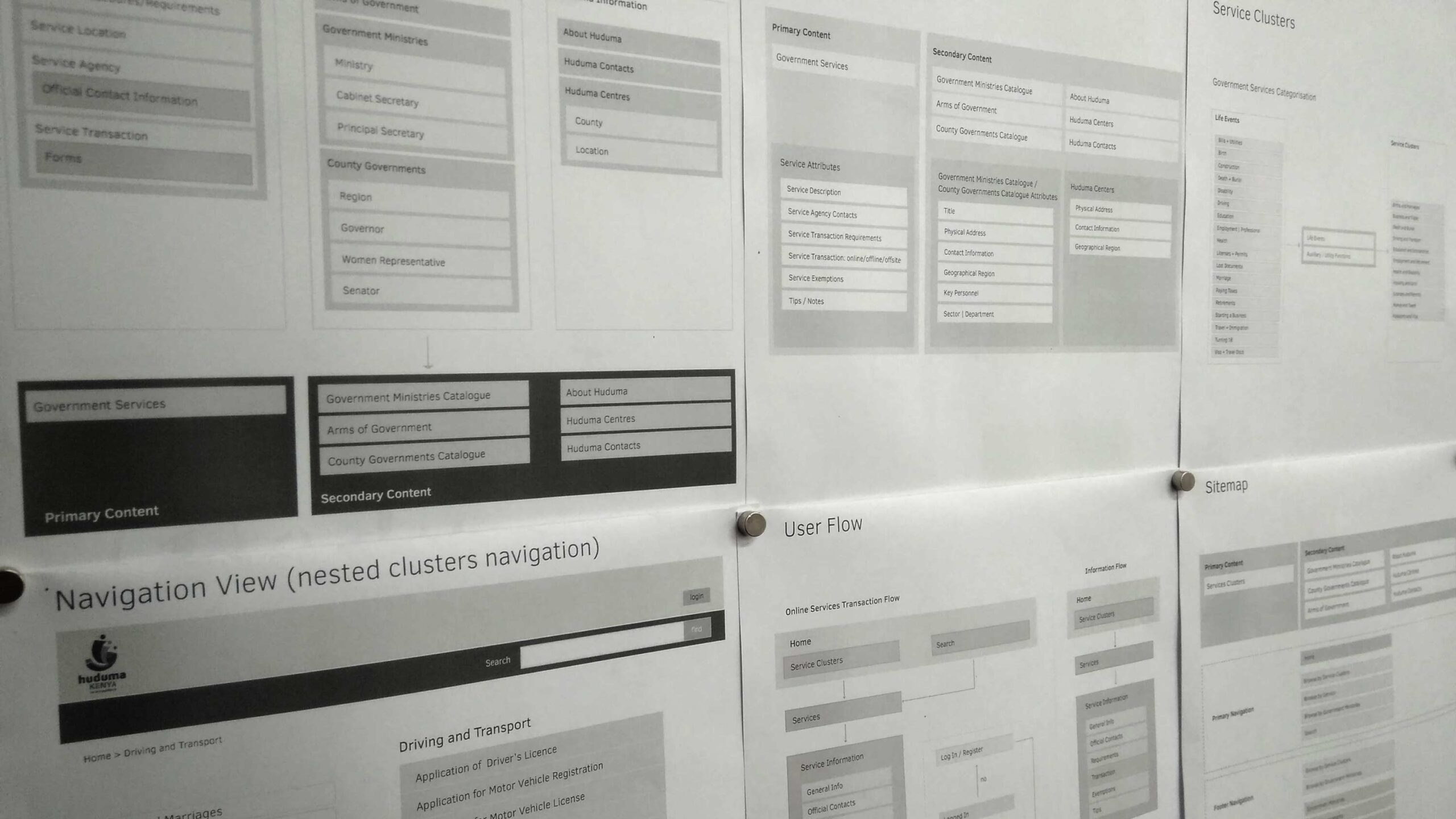
Design System
Information Design
In keeping with our design objective to create an interface that’s simple, functional and scalable, we developed graphic elements and layout hierarchies that would achieve a high level of intuitive usability of the interface, and presenting what could otherwise be overwhelmingly complex information in clear and easily consumed clusters.
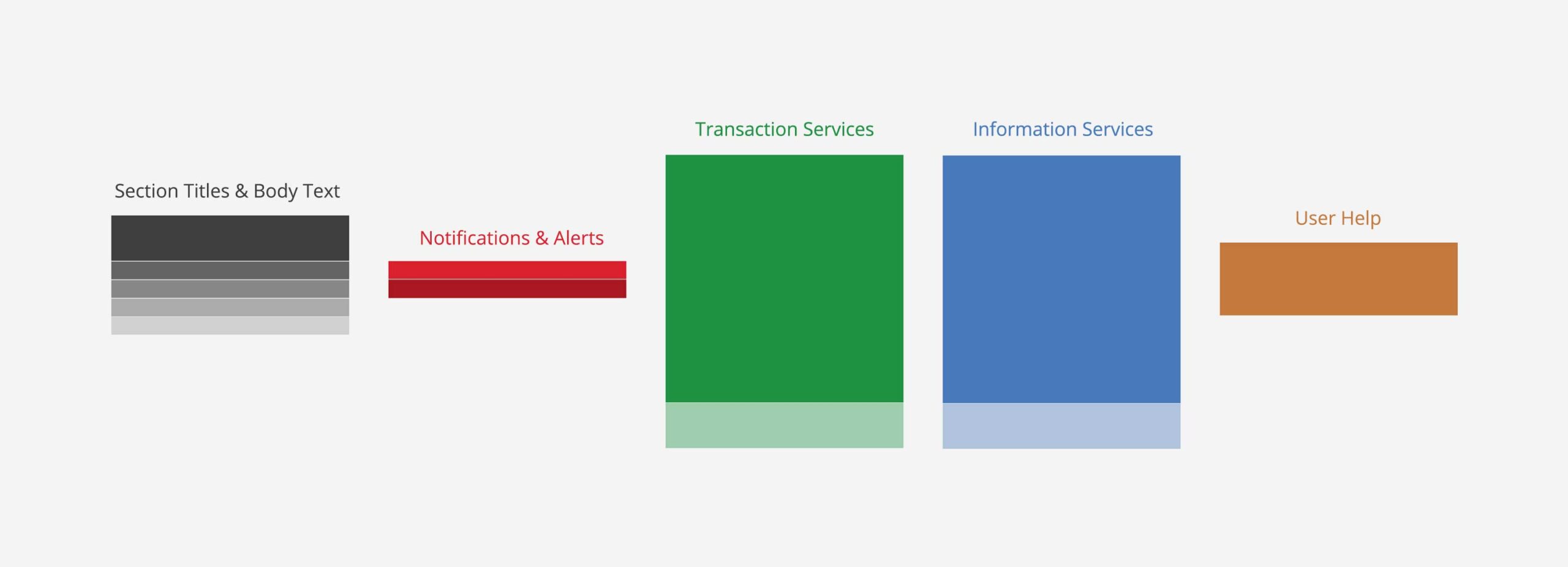
Experience Design / UX
Our design approach was user centered – meaning all elements of the interface would function together to ensure a simple, hassle-free and pleasant experience for the people using the system.
This includes elements of navigation, page layouts, interactive modules, typography and colour working in concert to achieve this balance.
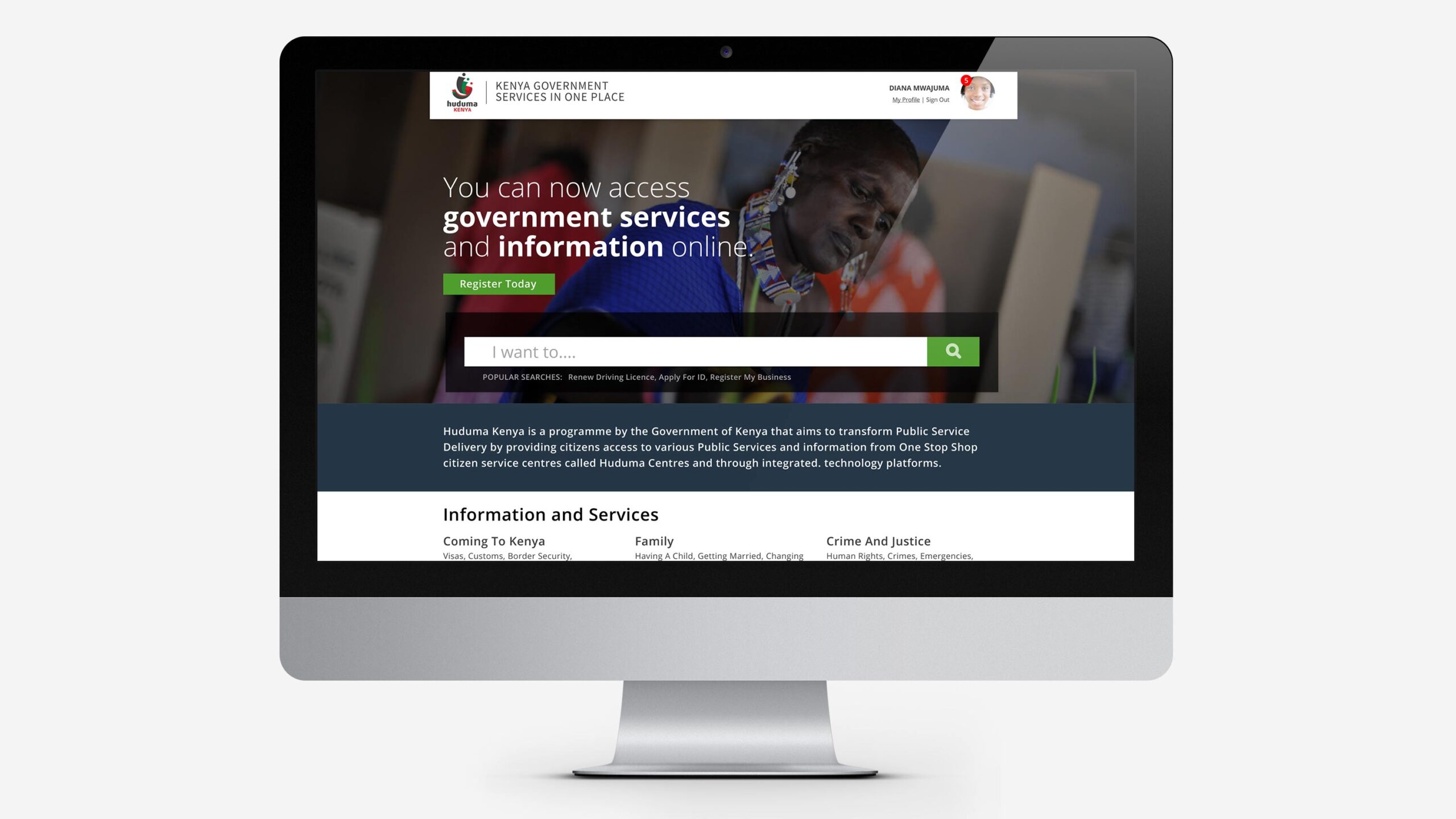
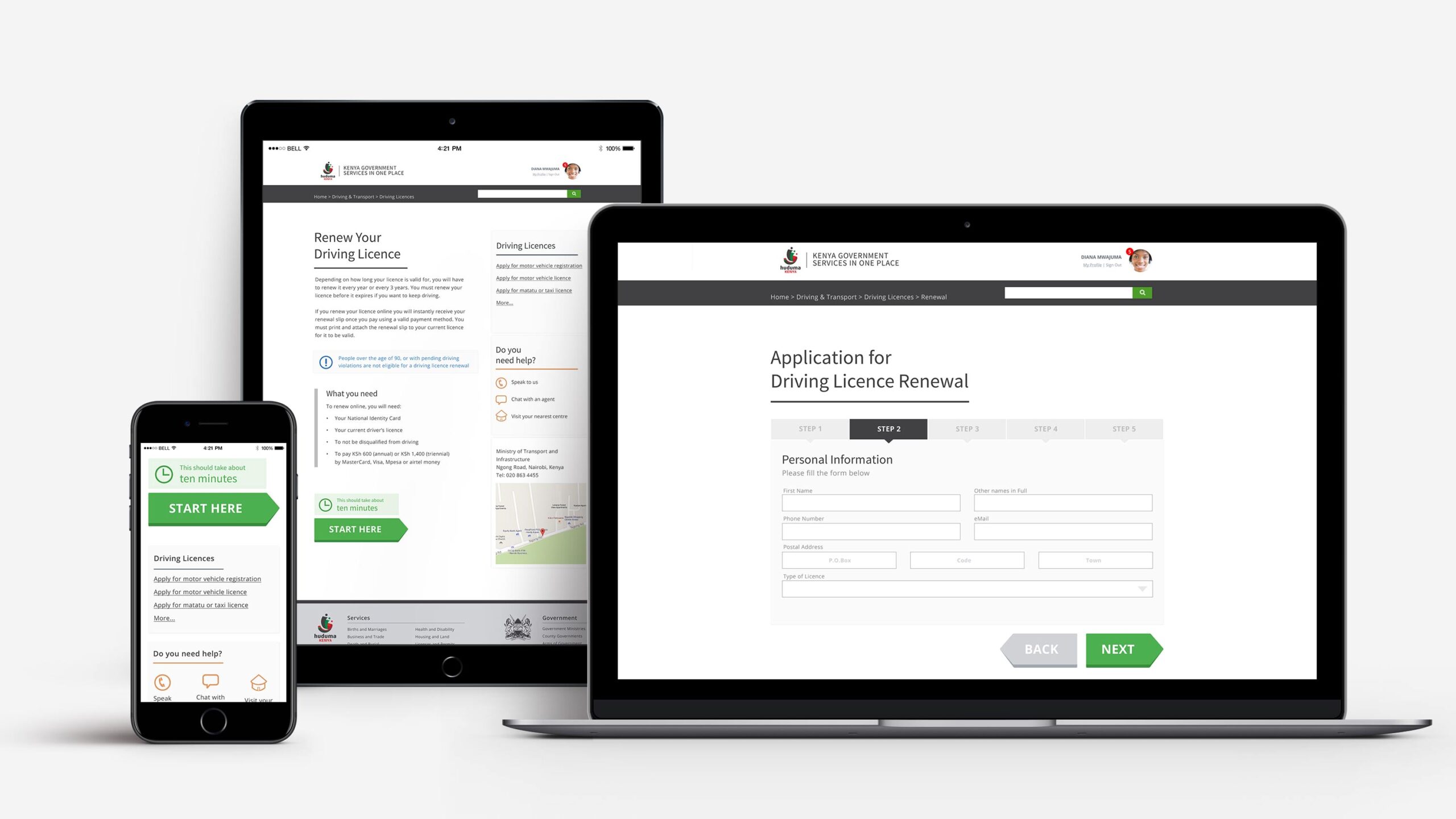
Editorial Guidelines
A comprehensive editorial guide was also created as a reference toolkit to streamline future content and new modules being included to the portal. This specified the tone and language that the Government of Kenya and its service delivery units would communicate with its citizens on digital platforms.
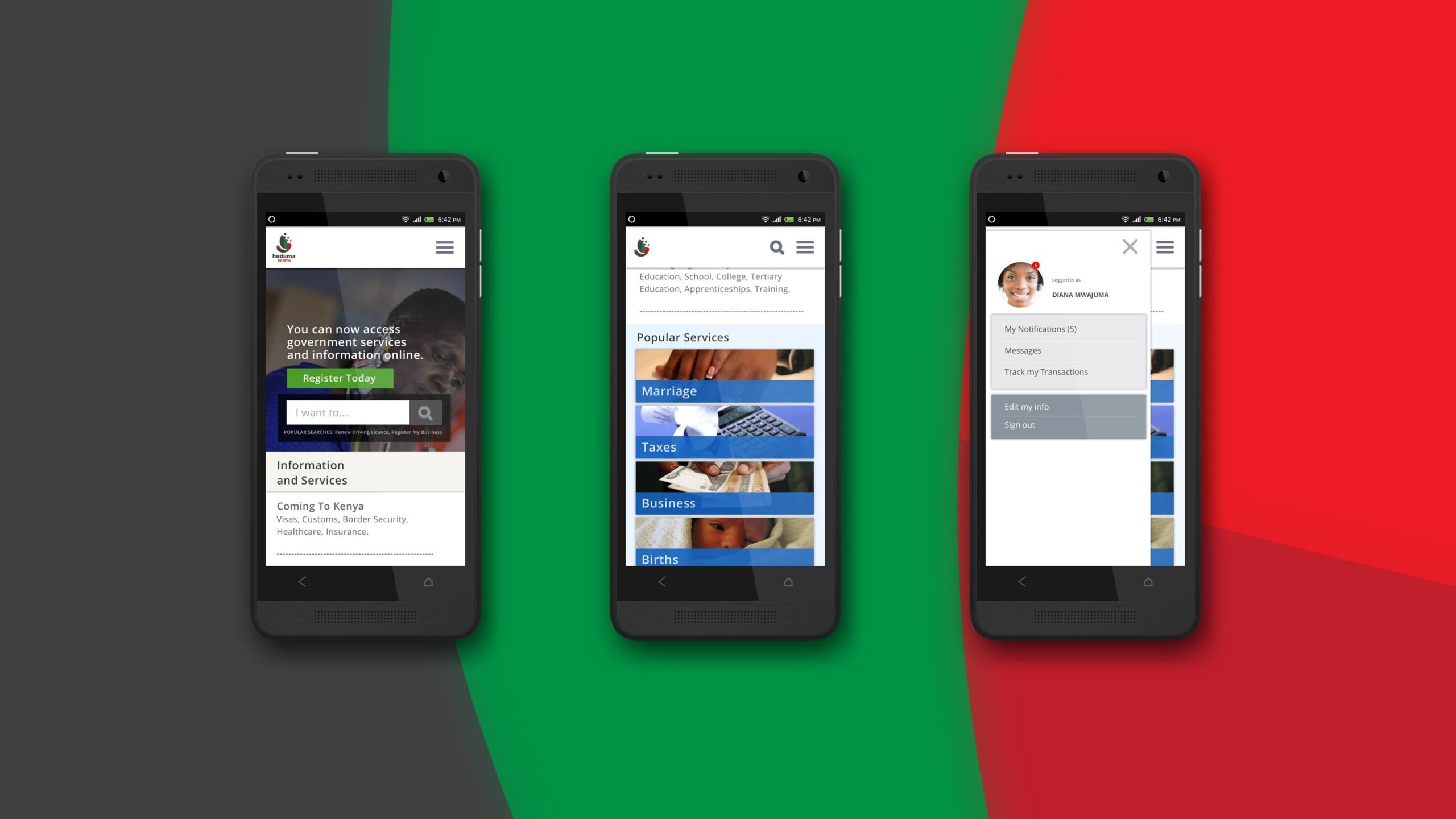
Huduma Card
In tandem with the Huduma Digital Portal, the government is also rolling out the Huduma Card – a pre-paid electronic “bank” card providing a variety of electronic services and facilitate electronic processing of payments by card users for both public and private sector services, running on a secure government platform. The card can be used for disbursements and distribution of payments from Government institutions to identified beneficiaries, as well as payments and cash transactions for government and other private sector services.
We saw a few major benefits of the Huduma card:
- Instant person to person/merchant payments without need for a phone or secondary device.
- Government disbursements through instant and safe government to citizen payments – a first.
- Platform independent transactions, running on a secure and neutral government platform, independent of private-sector organisations
- Financial inclusion and security for real grassroots economic impact.
- Added national information data layers such as ID, NSSF, NHIF, reducing the need for additional cards.
Point of Sale Branding, Campaign Strategy & Creative
The Huduma Card will be available to all people in Kenya, above the age of 18, with early enrolment efforts in rural and underserved parts of the country where need for financial inclusion is higher.
The card will be open for issuance by all qualified local banks and will operate on a pre-paid instant issuance model where users will register and get their card instantly, easily load money into the card and be enabled to immediately carry out cash and payment transactions.
We developed a nationwide campaign to encourage enrolment, supported by point-of-sale branding, how-to guides, and supporting communication material.

